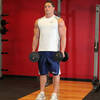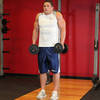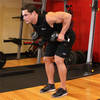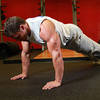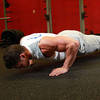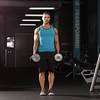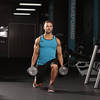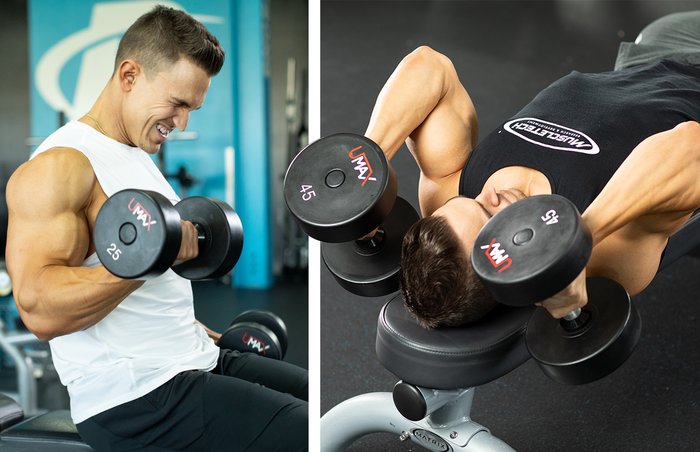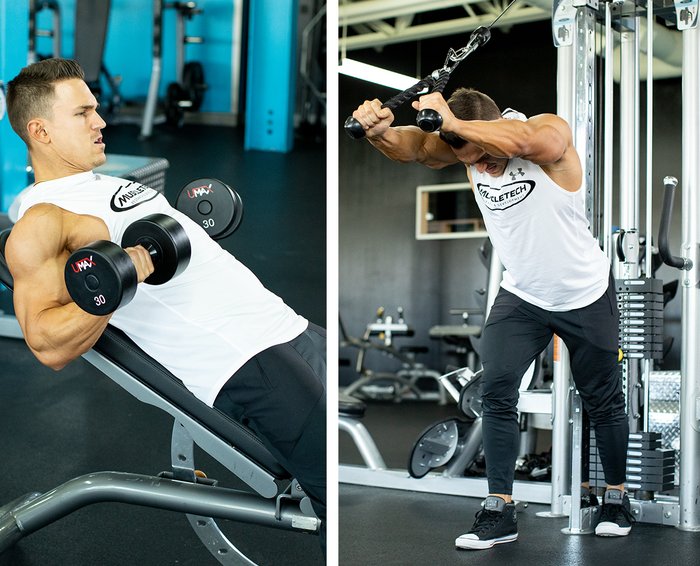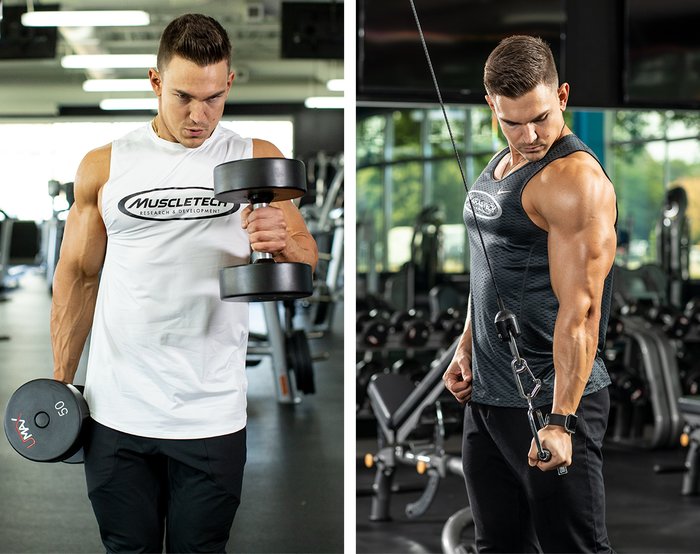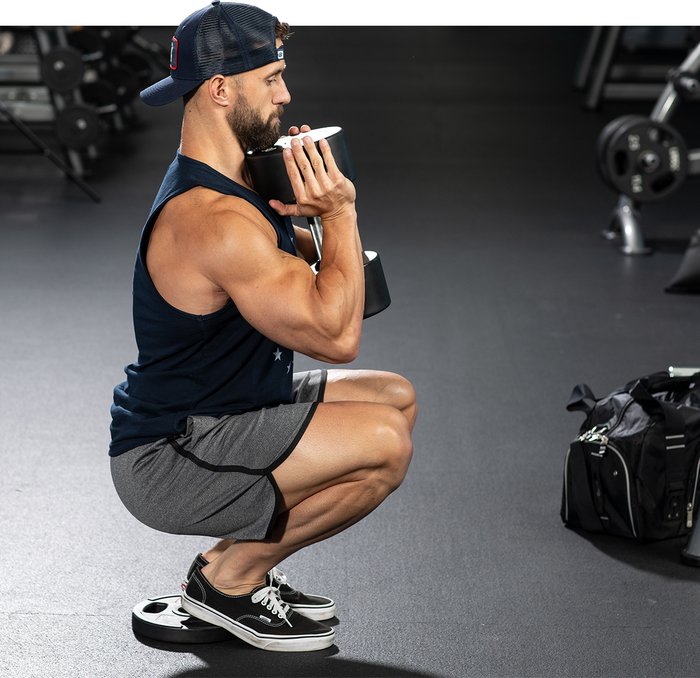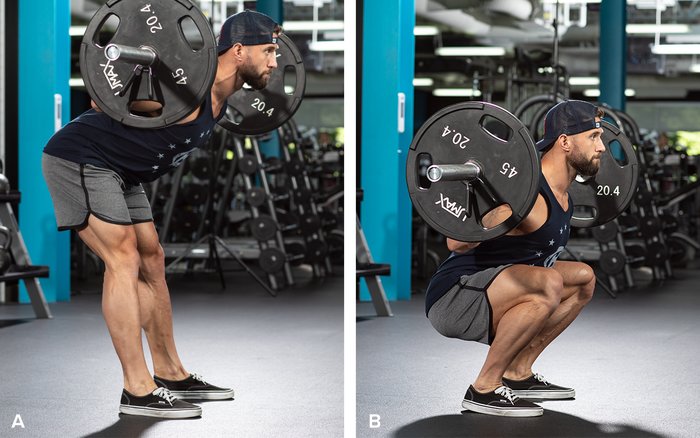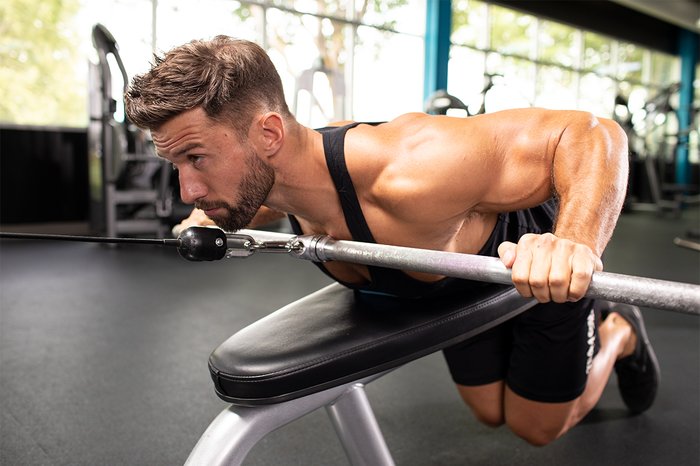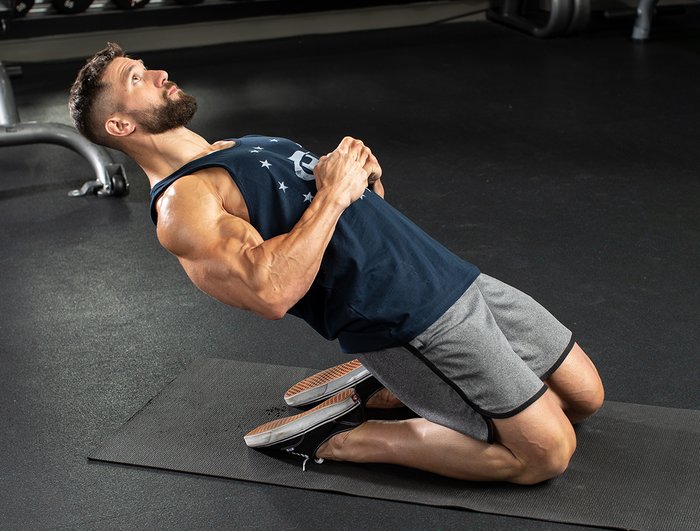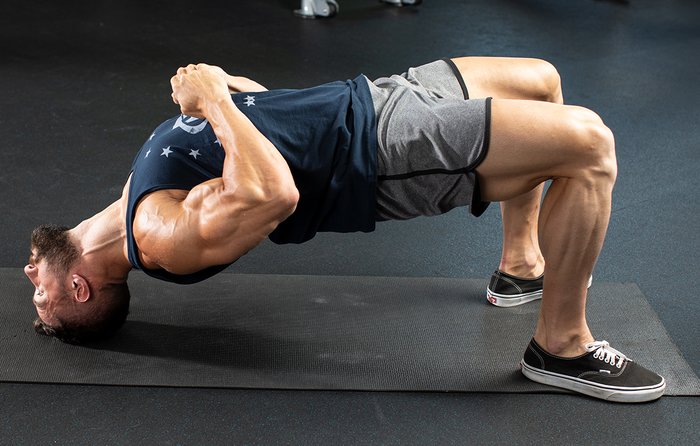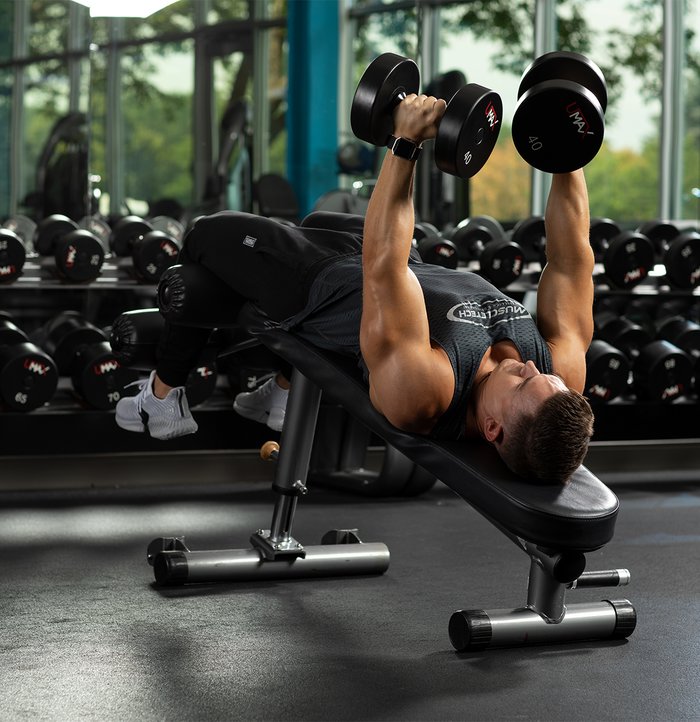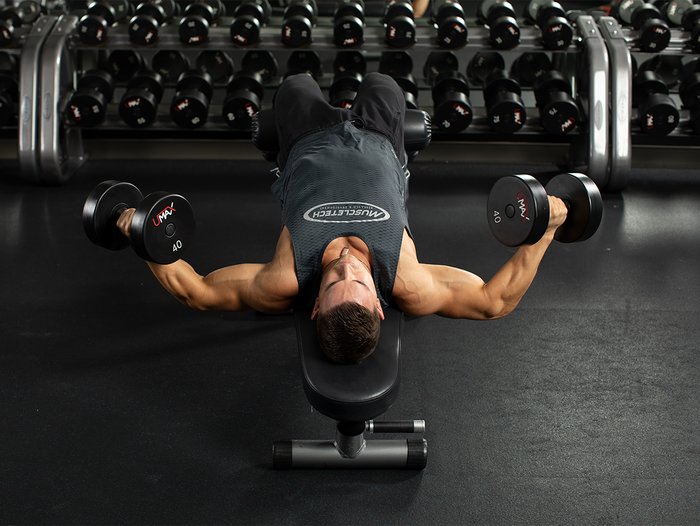31 Arnold-Approved Training Tips
Have you ever asked yourself, "What would Arnold Schwarzenegger do?"
These 31 ironclad tips straight from the Oak's library answer that
question, and they'll help you grow!
Long before he was paid
$25
million for his movie roles, Arnold Schwarzenegger penned monthly
articles for bodybuilding godfather Joe Weider's muscle magazines.
Arnold's writing didn't win any journalism awards, but he later
collected his ideas and training philosophies in his best-selling "The
New Encyclopedia of Bodybuilding," which is still used as a reference
tool by bodybuilders today.
Perusing Arnold's signature tome
requires some effort: The hardback version comes in at an even 800
pages, after all! While it's hefty weight might make it a nice addition
to your coffee table, the nuggets of training gold take a little work to
find. In the interest of mining the best knowledge from one of the
strongest minds in bodybuilding, here are
31 Arnold-approved training
tips to help you build your best body ever!
GENERAL TRAINING TIPS
1-
CHOOSE THE BEST EXERCISES FOR GROWTH
For the Oak, training hard was as important as training smart. "To get
big, you have to get strong," he wrote. "Beginning and intermediate
bodybuilders shouldn't be as concerned with refinement as with growth."
With this in mind, focus less on single-joint movements (sometimes
called isolation exercises) in favor of multijoint ones. The bench
press, squat, deadlift, overhead press, bent-over row, and power clean
are examples of solid multijoint exercises that require several muscle
groups to work in coordination. These exercises should form the
foundation of your training plan.
While these movements are more
difficult to master than their single-joint counterparts, they offer the
added benefit of allowing you to train very heavy to overload the
target muscle groups. Arnold believed that performing these moves and
challenging yourself with heavy weights was the single most critical
component of gaining strength and size
.
2- USE HEAVY WEIGHTS FOR LOW REPS
For Arnold, choosing the right load was just as important as selecting
the right exercise. After all, 8 reps of squats with 365 pounds taken to
failure elicits a far better muscle-building stimulus than a set of 95
pounds for 40 reps.
"Start with a few warm-ups [not taken to
muscle failure] and pyramid the weight up from one set to the next,
decreasing the reps and going to failure," Arnold wrote. "Usually, I'll
have someone stand by to give me just a little bit of help past a
sticking point or cheat the weight up just a little [once I've reached
muscle failure]."
Arnold wasn't just concerned with feeling the
weight; he wanted to make sure the load induced muscle failure at a
target range: "I make a point of never doing fewer than six repetitions
per set with most movements," he notes," and nothing higher than 12. The
rule applies to most body parts, including calves." Make sure to choose
the right weight to fail within that rep range.
3- DON'T GET COMFORTABLE WITH A ROUTINE
Few people know that Arnold has a business degree, but he didn't need
his diploma to realize that diminishing returns applies to workouts,
too.
Do the same workout for too long without making significant
changes, and its value will fall over time. That's when a bodybuilder
finds himself in a training rut.
"Within a basic framework, I was
constantly changing my exercises," Arnold wrote. "I liked to shock the
muscles by not letting them get complacent in a constant routine."
Arnold did his homework when it came to planning his training sessions.
If he found that an exercise was no longer producing gains, he'd switch
it for another.
Never afraid to experiment with new exercises or
alternative training methods, Arnold was on a perpetual search for new
ways to become bigger and better as old ways became stale.
4- GO PAST FAILURE WITH ADVANCED TECHNIQUES
In his book, Arnold identified the use of a number of advanced training
techniques as a weapon to bring up a lagging body part. Arnold used
just about every intensity booster in the book, so to speak, but he
zeroed in on what worked best for him simply through trial and error.
Don't be afraid to apply such techniques as forced reps, negatives,
dropsets, partials, rest-pause, or other ideas you may read about to
your own training. Be sure to evaluate how you feel after using one, and
remember not to take every set past muscle failure; save it for your
1-2 heaviest sets of each exercise.
5- GUARD AGAINST OVERTRAINING
In your zeal to bring up a stubborn muscle group, you might be tempted
to employ the "throw everything at 'em but the kitchen sink" approach,
but Arnold warned that this strategy might be counterproductive. "There
will be times when a body part lags behind because you are overtraining
it, hitting it so hard, so often, and so intensely that it never has a
chance to rest, recuperate, and grow," he wrote.
"The answer to
this problem is simply to give the muscles involved a chance to rest and
recover, and then to adjust your training schedule so that you don't
overtrain [the same body part] again. Remember, too much can be as bad
as too little when it comes to bodybuilding training."
SHOULDERS
6- OVERHEAD PRESSES ARE YOUR BEST MASS BUILDER
Multijoint movements like presses and upright rows are the best mass
builders for shoulders, since they engage the greatest degree of deltoid
musculature. Arnold would go heavy with these movements, especially
early in his workouts when his energy levels were highest. He commonly
did presses both behind and in front of his head for complete
development.
7- LEARN MULTIPLE WAYS TO DO THE SAME MOVEMENT
Small differences in how similar movements are done work the target
musculature in slightly different ways, allowing for greater overall
stimulus.
Arnold sought out alternative exercises that worked a
target muscle from slightly different angles. When using dumbbells
rather than the barbell on overhead presses, for example, he
deliberately lowered the weights several inches below the bottom
position of the barbell movement, and he brought them together at the
top to elongate the range of motion.
8- ATTACK EACH DELT HEAD WITH A SINGLE-JOINT MOVE
Arnold used single-joint movements to complement overhead presses and
isolate each delt head individually. Here, too, he sought subtle
differences that would, over time, build better overall size. For
example, the cable lateral raise in front of the body has a slightly
different feel than when the cable runs behind you. Knowing how to do a
given movement pattern on different pieces of equipment is, according to
Arnold, essential for a bodybuilder to take his physique to the next
level.
9- TRAIN UPPER TRAPS WITH DELTS
Because the upper
traps get some degree of stimulation during many shoulder exercises,
Arnold trained them with delts. His main upper-trap exercise was the
shrug, though he noted that maximizing the size of this muscle required a
number of other movements, including power pulls, cleans, and upright
rows. Because the range of motion in a shrug is fairly short, Arnold
recommended backing off on the weight in favor of being able to fully
shrug your shoulders as high as possible.
BICEPS
10- BUILD MASS WITH THE STANDING BARBELL CURL
Arnold loved the standing barbell curl for building baseball biceps.
When looking for a major mass-building move, Arnold preferred exercises
that allowed him to push heavy weight, let him achieve a full range of
motion, and could be hammered for 6-8 heavy reps. That's how he built
his biceps into mountains, and it's a great start for your workout, too.
11- DON'T STOP AT FAILURE
While the Oak commonly took his curls to muscle failure, he didn't stop
there. Once he reached a sticking point, he'd use just enough momentum
to keep the set going. Such cheat curls allowed him to complete an extra
couple of reps, helping to further stimulate the muscle.
12- SUPINATE YOUR DUMBBELL CURLS
Arnold wrote that he always included at least one dumbbell movement in
his routine. By supinating his hand (turning it upward as he curled), he
felt he got a greater "peaking" effect because the brachialis is
recruited into the motion when the hand starts in the neutral position.
Arnold performed supinating dumbbell curls simultaneously and with
alternating reps. The latter allows more body English and a bit of rest
between reps.
13- USE HIGHER REPS ON CERTAIN EXERCISES
Not
every biceps movement was done for 6-8 reps. Arnold identified certain
exercises that he called "definition-building movements," which he
performed with relatively lighter weights for sets of 8-12 reps. Here,
his focus was on squeezing and contracting the muscle, and holding the
peak contraction for a long count. Concentration curls, preacher curls,
and alternating dumbbell curls were among his favorites.
TRICEPS
14- EXPERIMENT WITH A STRONG BODY PART
Arnold's chest and triceps were particularly strong body parts, so he
didn't train them in the same ways he did his biceps. Because his
triceps were already strong, Arnold allowed his rep range to drift up to
20 per set in an effort to hyperpump the muscle.
15- FIND THE TARGET OF AN EXERCISE
"It's silly doing a triceps movement and not knowing precisely which
part of the triceps you're hitting," Arnold wrote. Great advice, but how
should you apply it?
Arnold suggested a tip he learned from
legendary trainer Vince Gironda: Do 20 sets of a particular movement,
and then nothing else for that body part.
See where the soreness is most concentrated the following day.
16- ADD PARTIALS AFTER FAILURE
With triceps, Arnold's advanced technique of choice was partial reps.
After doing a set of full-range push-downs, for example, he'd extend the
set with 5-6 partials, either over the top or bottom half of the
movement.
Even though he couldn't do any more full-range reps and
was limited by the sticking point, he could still manage a few more
reps to really spur growth.
17- DO SUPER SETS TO INTENSIFY THE PUMP
Arnold frequently superseded biceps and triceps movements—or, in other
words, performed exercises back to back—to bring an enormous amount of
blood into his arms. Blood carries oxygen and nutrients critical for
growth, but these super sets also enabled Arnold to achieve his ultimate
training goal: a killer pump. Super setting a smaller muscle group like
arms is easier than a larger one like legs, though Arnold often did that
pre-contest as well.
LEGS
18- PRIORITIZE YOUR WEAKNESSES
If you've got big pecs, it's only natural to want to show them off, and
you probably also give them a little extra effort in the gym. But
Arnold took exactly the opposite approach. In fact, at one point, Arnold
decided his calves had fallen behind the rest of his physique in
overall development.
Rather than hide the glaring weakness, he
famously cut off the lower half of his pants and wore shorts to
constantly remind himself of his weakness and redouble his efforts to
bring them up. He trained calves more frequently, early in his workouts
when he was fresh, and sometimes between sets for larger body parts, a
strategy that helped him claim the world's biggest bodybuilding title.
19- TEST EVERYTHING
Being long-legged, calves weren't Arnold's only shortcomings early in
his career; his thighs were also comparatively small. That meant
throwing out the usual playbook on leg day. "Building up legs was hard
for me because I have long legs and long leg muscles," he wrote.
"The long-legged bodybuilder has to explore a wider variety of exercises
in his lower-body routine. That means incorporating other exercises
until you find out which ones make your legs respond best. And you have
to keep varying your routine so that your muscles are constantly
surprised by the demands you're putting on them."
20- ADJUST YOUR STANCE AS NEEDED
When squatting, Arnold found that different foot positions worked
different areas of the thighs. "With my feet farther apart and toes
pointed out, I feel squats on the insides of my thighs," he wrote. "The
position of the feet largely determines which part of the thigh is most
affected."
Arnold liked to use various squats and squat machines,
both standing and lying, so he could to use various foot placements and
target every part of his legs.
21- USE MACHINE SQUATS TO YOUR ADVANTAGE
Machine squats may not be superior to free-weight ones, but Arnold
goosed them to make them harder. Here, Arnold used a shortened range of
motion—going about three-fourths of the way down to a quarter of the way
from the top, a technique he called "tension squats"—which allowed him
to induce an incredible burn without having to balance the weight.
22- ADD HAMSTRING EXERCISES
While the hammies get worked during basic squat and leg-press
movements, contracting to control the speed of the descent as the quads
are being stretched, Arnold argued that you still need to do exercises
that directly target this area.
Deadlifts are a great total-body
movement, and single-joint leg curls and Romanian deadlifts also focus
on the rear thighs. Hamstring strength is important to reduce the risk
of knee injuries, which can occur when the strength of the quads
overpowers the strength of the hams.
ABS
23- TRAIN YOUR ABS INDIRECTLY
Arnold's approach to ab training was fairly simple, and he had a few
favorite moves that he did for fairly high reps. Then again, when you
consider how hard he trained his core with his thrice-weekly leg and
back workouts, you'd venture he probably didn't even need to train his
abs at all.
Heavy, multijoint free-weight movements clearly
played a bigger role both in the strength and aesthetics of his
midsection than his limited abdominal workouts.
CHEST
24- BUILD STRENGTH TO BUILD SIZE
For Arnold, building a big chest started with training for strength
since he competed as a powerlifter early in his career. With a
foundation of strength, Arnold discovered that gains in size came
easier. Consider an offseason powerlifting cycle to help boost all your
numbers before shifting back into bodybuilding-style training. For the
record, Arnold once benched 225 pounds for 60 reps!
25- USE MULTIPLE ANGLES
Arnold included basic multijoint movements in his routine that hit the
pecs from a variety of angles. "I knew the routine had to be basic and
very heavy," he wrote. Basic, for Arnold, meant sticking to flat,
incline, and decline benches while occasionally training like a
powerlifter rather than trying a multitude of machines or using trendy
techniques. Arnold saved pumping sets for the end of his workout.
26- CYCLE TRAINING VOLUME TO SPUR GROWTH
What makes Arnold's routine stand out today is the volume and frequency
with which he trained every body part. His offseason chest routine
consisted of up to 26 working sets on a high-volume day, and he trained
his pecs three times a week! Arnold also cycled heavy and light days to
work the muscles with different relative intensities and ensure he
wasn't overtraining his pecs.
That kind of volume and frequency
suited the Oak during his competitive years, but cycling off periods of
high volume or high-frequency training ensures you're less likely to
overtrain.
27- GET TO KNOW DUMBBELL VARIATIONS
While
Arnold favored barbells in the gym because of the heavier weights he
could lift, he knew the advantages of dumbbells. "I feel a better
stretch when doing dumbbells, especially with incline movements. The
dumbbells can be lowered deeper than a barbell," he noted.
Dumbbells allow you to work through a longer range of motion, but be
careful not to overstretch the shoulder joint at the bottom of the move.
BACK
28- VARY YOUR PULL-UPS AND PULL-DOWNS
Arnold typically divided his back training into two types of movements:
chinning and pull-downs for width, and rows for overall thickness. With
the former, he used all kinds of variations, in part because he had to
bring his back up to match his pecs.
So he did underhand-grip
chins and pull-ups with and without added weight, and he varied his
pull-downs, sometimes bringing the bar behind his head and other times
to his chest. The net result was an assault that worked the lats from
multiple angles for better overall development.
29- MIND YOUR ELBOWS
"Wide-grip pull-ups coax the upper lats to come out," Arnold wrote.
Understand that with wide-grip movements, the elbows stay out away from
the sides, which engages the upper lats more effectively. With
closer-grip and reverse-grip back exercises, the elbows stay in tighter
to the sides, which reduces the emphasis on the upper lats and instead
places more of the focus on the lower lats. So depending on elbow
position relative to your torso, you can effectively focus on some areas
of the back over others.
30- SHOOT FOR A REP TARGET
Most
trainers typically do 3-4 sets of an exercise, but with chins Arnold
commonly used a technique in which he aimed for a total number of
reps—say, 50—rather than target a particular number of sets: "On the
first set you may do 10 reps. Perhaps you struggle with 8 reps on the
second set. You have 18 reps now. If you make 5 on the third set, you
have 23 reps. You continue to add them until you've reached 50, even
though it may take you 20 sets to do it. That's how I built up my
chinning power, and I was very successful with it."
31- DO ROWS, PYRAMIDING THE WEIGHT UP
Exercises in which you pull the weight perpendicularly into your
body—often called rows—were a big part of Arnold's back workout. He
favored all kinds of variations—seated cables rows, T-bar rows,
bent-over barbell rows—but each one was done with high volume and
progressively heavier weights. Arnold followed a pyramid scheme in which
he increased the weight on successive sets for fewer reps. Only the
heaviest sets were taken to muscle failure.
GROW LIKE THE OAK
Armed with these 31 ironclad tips, it's your turn to train and grow
like Arnold! Get to the gym, get under the bar, and be sure to hit
compound exercises for some heavy weight. Oh, and if you have any
favorite tips to share on your way out, drop them in the comments
section below!







